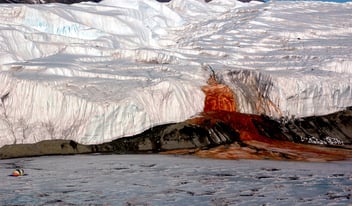Tumbleweeds on a Roll - Kesler Science Weekly Phenomenon and Graph
Imagine opening your front door to find it's completely buried in... tumbleweed? Your car and street are covered, too. It's not science fiction; it's happening in Utah! I've attached a video below - it's wild!
Even though tumbleweeds are a familiar backdrop of Westerns, they're not just an American phenomenon. "Tumbleweed" is a catch-all phrase for plants all over the world whose seed dispersal strategy relies on the upper part of the plant detaching and rolling in the breeze.
Tumbleweeds in the U.S. are mainly an invasive species of Russian thistle that the U.S. government has fought for decades. The government wants them gone because they force extinctions of native plants and catch fire very easily. The efforts to remove them have failed spectacularly, though; the plants are just too adept at survival.
First, a quick botany recap: generally, plants absorb CO2 from the atmosphere during the day to use in photosynthesis. They have to keep the stomata on their leaves open to allow this gas exchange, which also allows moisture to escape. In very hot weather, plants may close their pores, but then their growth slows from lack of carbon dioxide.
Russian thistle, commonly known as tumbleweed, has some amazing adaptations. First, it's part of a group of plants that use CO2 more efficiently. Second, these plants have a special metabolism that allows them to save carbon dioxide that the plant produces at night.
As a result, on a hot day, Russian thistle can close its stomata to save moisture and still have enough CO2 to keep growing! Check out this info from the Saskatchewan Agriculture Knowledge Centre:
.png?width=600&height=450&name=Russian%20thistle%20vs%20wheat(3).png)
The graph above compares the growth in wheat and Russian thistle at different temperatures. Wheat isn't in the same group as tumbleweed; it isn't able to store CO2 for use the next day. If these two plants were competing for the same space in a field, which would grow better in cool weather, and which would grow better in hot weather? How could weather play a role in this year's tumblegeddon?
If I shared this graph with my students in class, here are some other questions I'd ask them:
💡How does temperature impact the growth of Russian thistle? How can you tell?
💡In 15° C weather, for how many weeks will the growth rate of wheat and Russian thistle be about the same?
💡Use data from the table to justify how warmer temperatures would change the plants that would be most successful in this habitat.



